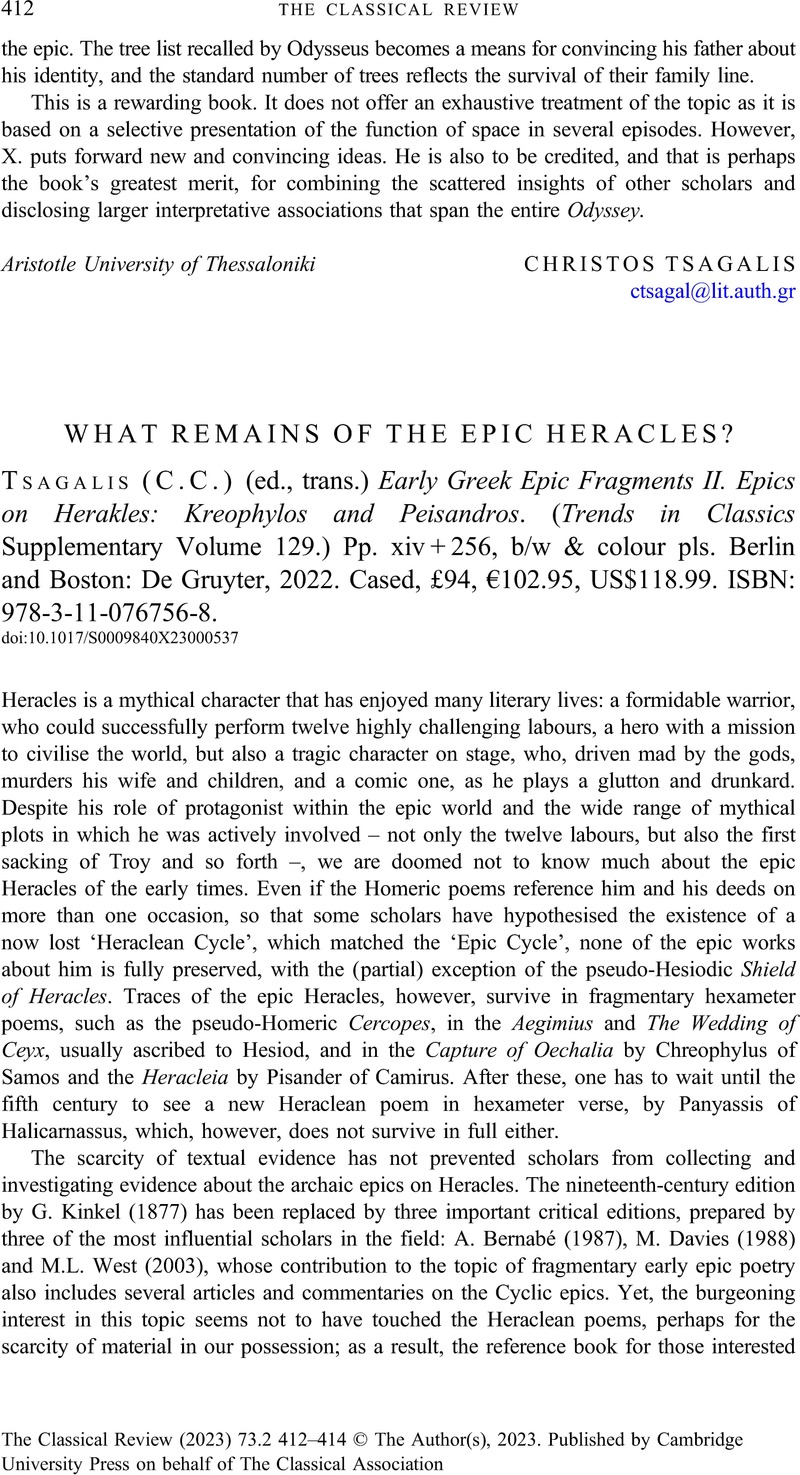No CrossRef data available.
Article contents
WHAT REMAINS OF THE EPIC HERACLES? - (C.C.) Tsagalis (ed., trans.) Early Greek Epic Fragments II. Epics on Herakles: Kreophylos and Peisandros. (Trends in Classics Supplementary Volume 129.) Pp. xiv + 256, b/w & colour pls. Berlin and Boston: De Gruyter, 2022. Cased, £94, €102.95, US$118.99. ISBN: 978-3-11-076756-8.
Review products
(C.C.) Tsagalis (ed., trans.) Early Greek Epic Fragments II. Epics on Herakles: Kreophylos and Peisandros. (Trends in Classics Supplementary Volume 129.) Pp. xiv + 256, b/w & colour pls. Berlin and Boston: De Gruyter, 2022. Cased, £94, €102.95, US$118.99. ISBN: 978-3-11-076756-8.
Published online by Cambridge University Press: 24 April 2023
Abstract
An abstract is not available for this content so a preview has been provided. Please use the Get access link above for information on how to access this content.

- Type
- Reviews
- Information
- Copyright
- Copyright © The Author(s), 2023. Published by Cambridge University Press on behalf of The Classical Association



